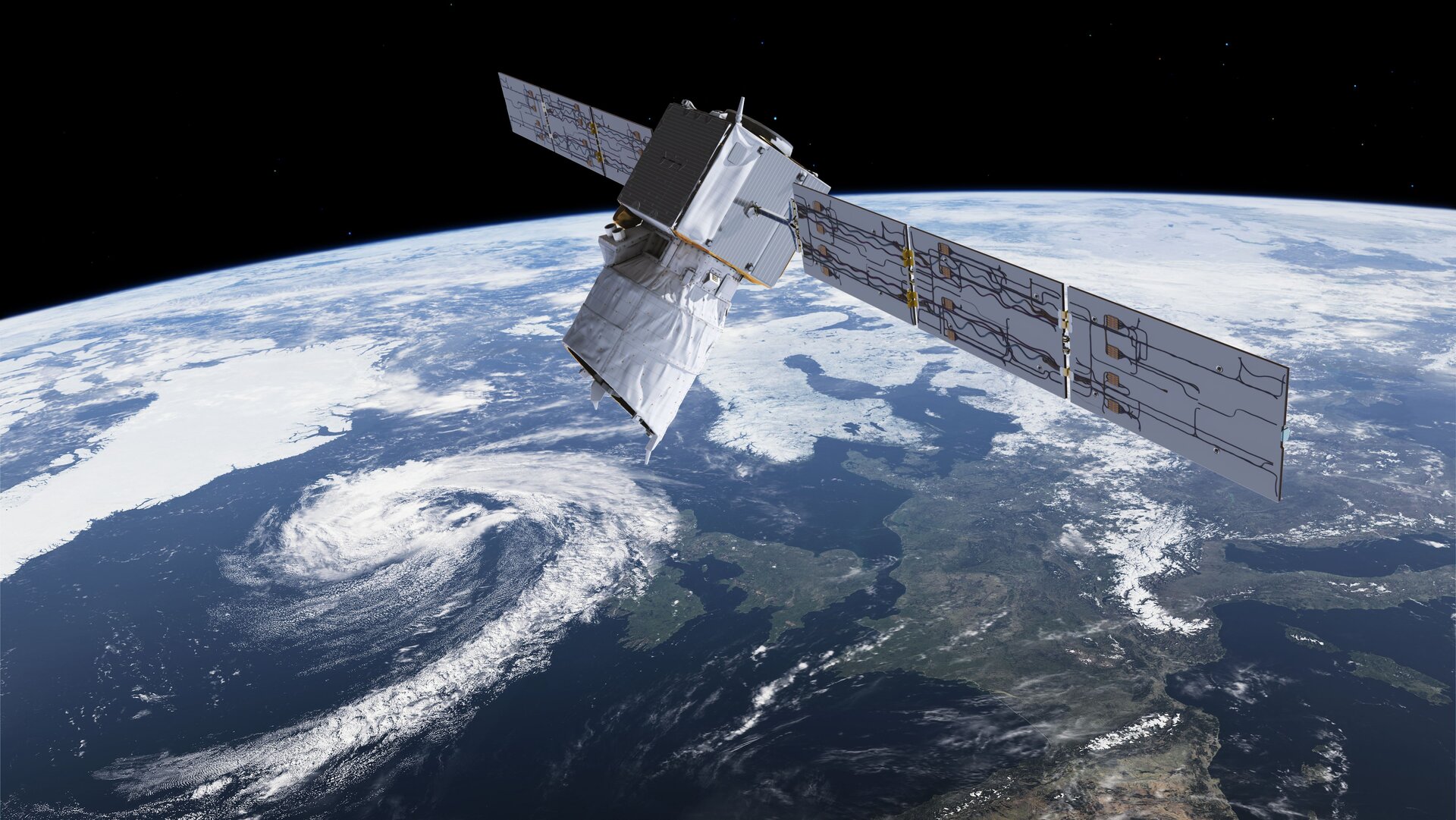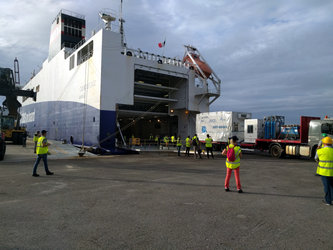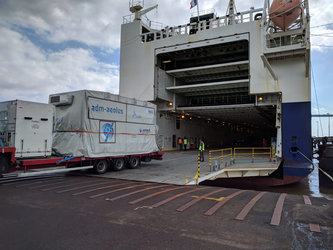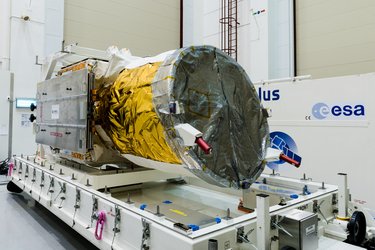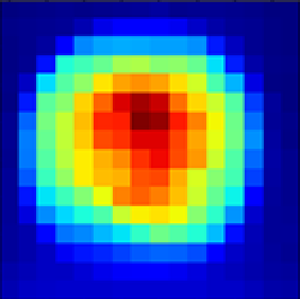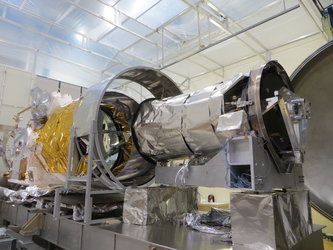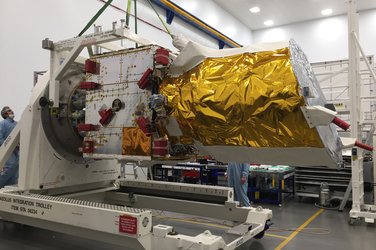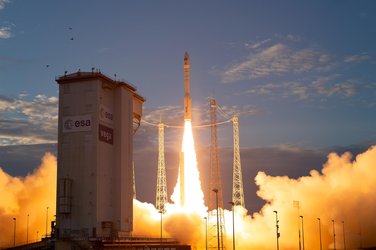Aeolus — preparing to fly the wind mission
The launch of Aeolus — ESA’s mission to map Earth’s wind in real-time — is getting tantalisingly close, with the satellite due for lift-off on 21 August from Europe’s Spaceport in Kourou, French Guiana. With the wind in their sails, mission teams are busily preparing this unique satellite for its upcoming journey.
Aeolus will carry a sophisticated atmospheric laser Doppler instrument, dubbed Aladin. Combining two powerful lasers, a large telescope and extremely sensitive receivers, it is one of the most advanced instruments ever put into orbit.

The spacecraft has already been tested to handle the rigours of space, and recently made a 12-day crossing of the Atlantic from France to Europe’s Spaceport in Kourou, French Guiana.
Lift-off is set for 21 August at 21:20 GMT (23:20 CEST) on a Vega rocket.
“Aeolus’ arrival at the launch site marks the end of 16 years of intensive planning, testing and construction, by literally generations of engineers and scientists” says Juan Piñeiro, Spacecraft Operations Manager for Aeolus.
“We now look forward to seeing the skill and dedication of these countless individuals come to fruition, as Aeolus takes flight and we begin receiving evidence that the satellite can fulfil its very ambitious mission objectives.”
The complex world of winds

Currently one of the biggest challenges in making accurate weather predictions is gathering enough information about Earth’s wind. Aeolus will be the first-ever satellite to directly measure winds from space, at all altitudes, from Earth's surface through the troposphere and up 30 km to the stratosphere — providing information that will significantly improve the quality of weather forecasts.
Paolo Ferri, Head of Mission Operations at ESA adds, “The Aeolus mission will be a wonderful addition to our fleet of satellites that continually observe Earth bringing us incredible insights into our planet, in particular into the complex world of atmospheric dynamics and climate processes — systems that not only affect our everyday lives but also have huge consequences for our future.”

Aeolus will orbit continuously from pole to pole in a so-called ‘Sun-synchronous’ orbit — passing over any given point on Earth’s surface at the same local time each revolution, always maintaining the same orientation in relation to the Sun.
Specifically, Aeolus will follow a ‘dawn/dusk’ orbit, appearing to follow the borderline between sun and shade, day and night on Earth, meaning its solar panels will always receive the same amount of light from the Sun.
Simulating every eventuality

In preparation for this unique mission, teams at ESA’s European Space Operations Centre have spent months practising to handle any possible scenarios in a series of launch simulations in the centre’s Main Control Room.
Once a satellite has been launched into space, it goes through the critical and complex ‘launch and early orbit phase’, during which control systems and, later, instruments, are progressively switched on and their health and proper functioning assessed.
This is a risky time when the satellite is unusually vulnerable — not yet fully functional but still exposed to the hazards of space.
Pier Paolo Emanuelli, Flight Director for Aeolus, describes this unique period:
“Every satellite has its own unique objectives, orbit and quirks, and Aeolus is no exception. Teams of highly trained engineers, flight dynamics specialists and experts in control systems and ground stations have been practising exactly what Aeolus needs to do, when, and how they will instruct it to do so.”
“It’s a challenging but very exciting time!”


